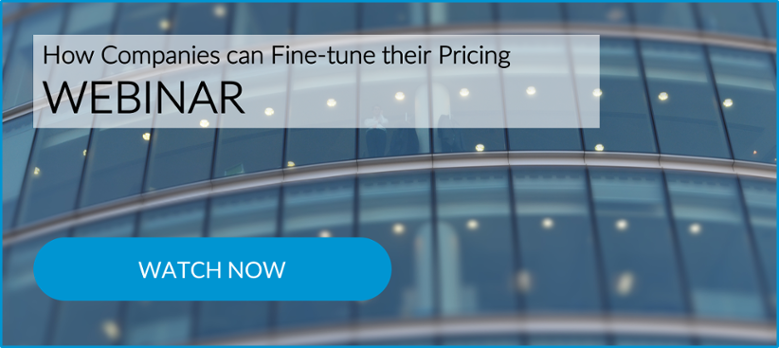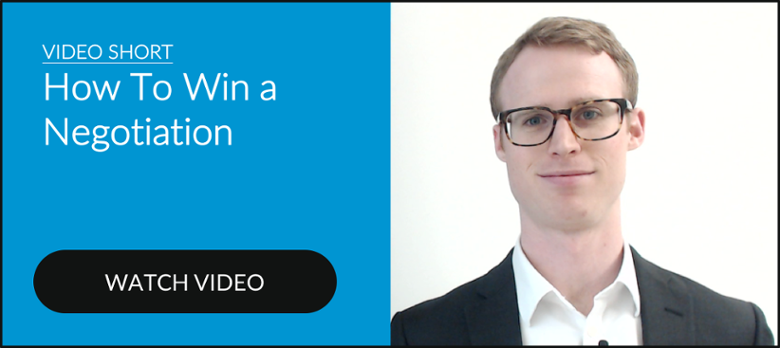
Price has a massive impact on your business. When setting your prices you must make sure that the price and sales levels you set will allow your business to be profitable. You must also take note of where your product or service stands in comparison with your competition.
Price optimisation is not about selling less at a higher price, it’s about eliminating the leakages and practices that enable you to capture improvement in a systematic way in your net price realisation.
Here are some ways to optimise your pricing.
1. Know the difference between cost and value
The cost of your product or service is the amount you spend to produce it.The price is your financial reward for providing the product or service. The value is what your customer believes the product or service is worth to them.
For example, the cost for a plumber to fix a burst pipe may be £5 for travel, materials costing £5 and an hour's labour at £40. However, the value of the service to the customer - who may have water leaking all over their house - is far greater than the £50 cost, so the plumber may decide to charge a total of £100.
Your pricing should be in line with the value of the benefits that your business provides for its customers, while also bearing in mind the prices your competitors charge.
To optimise your pricing, explore:
- What benefits your customers gain from using your product or service
- The criteria your customers use for buying decisions - for example, speed of delivery, convenience or reliability
- What value your customers place on receiving the benefits you provide
Wherever possible, set prices that reflect the value you provide - not just the cost.
2. Cover your fixed and variable costs
Every business needs to cover its costs in order to make a profit. Working out your costs accurately is an essential part of working out your pricing.Divide your costs under two headings:
- Fixed costs are those that are always there, regardless of how much or how little you sell, for example rent, salaries and business rates
- Variable costs are those that rise as your sales increase, such as additional raw materials, extra labour and transport
When you set a price, it must be higher than the variable cost of producing your product or service. Each sale will then make a contribution towards covering your fixed costs - and making a profit.
For example, a car dealership has variable costs of £18,000 per car sold and total fixed costs of £400,000 a year that must be covered. If the business sells 80 cars each year, it needs a contribution towards the fixed costs of at least £5,000 per car (£400,000 divided by 80) to avoid making a loss.
Using this structure, you can assess the consequences of setting different price levels.
3. How to build a pricing strategy
It's important to find out what your competitors offer and what they charge. Try 'phoning your rivals to ask them for a quote and use this information as a framework.It's unwise to set your prices much higher or lower without good reason. If you price too low, you will just be throwing away profit. If you price too high, you will lose customers, unless you can offer them something they can't get elsewhere.
The perception of your product or service is also important. In many markets, a high price contributes to the perception of your product being of premium value. This might encourage customers to buy from you or it might deter price-sensitive customers.
It can be useful to charge different prices to different customers, e.g. to those who make repeat purchases to thank them for their loyalty.
4. Cost-plus versus value-based pricing
There are two basic methods of pricing your products and services: cost-plus and value-based pricing. The best choice depends on your type of business, what influences your customers to buy and the nature of your competition.
Cost-plus pricing
This takes the cost of producing your product or service and adds an amount that you need to make a profit. This is usually expressed as a percentage of the cost.
It is generally more suited to businesses that deal with large volumes or which operate in markets dominated by competition on price.
However, cost-plus pricing ignores your image and market position. Remember, hidden costs are easily forgotten, so your true profit per sale is often lower than you realise.
Value-based pricing
This focuses on the price you believe customers are willing to pay, based on the benefits your business offers them.
If you have clearly-defined benefits that give you an advantage over your competitors, you can charge according to the value you offer customers. While this approach can prove very profitable, it could alienate potential customers who are driven only by price. It may also draw in new competitors.
5. Increasing prices
Increasing prices can improve your profitability even though your sales volume may drop.If you are increasing your prices, always explain to your customers why you are doing it. You can use the price change as an opportunity to re-emphasise the benefits you offer. A good explanation can also strengthen your relationship with a customer.
There are also ways that you can hide price increases. For example, you might:
- Introduce new, higher-priced products or services and make older, cheaper ones obsolete
- Lower the specification/volume (and therefore your costs) whilst maintaining the same price. Supermarkets have done this to good (though risky) effect since the Brexit Referendum.
6. Reducing prices
This is a decision not to be taken lightly. Do you really want to be considered the budget, poor quality option?
Concentrate on building profits rather than cutting prices to build up sales. In most circumstances, your customers decide to buy from you because of the benefits you offer, along with your price. It is rare for the decision to be made based solely on the price.
7. Good, better, best options
A classic strategy to optimise your pricing is to offer good, better, best products. Two examples: on a long flight, there's a choice between economy, business and first class or a supermarket might sell generic cornflakes, actual Kellogg's cornflakes, and then a high-end, organic, cornflakes-like cereal.
The idea is to still capture the bargain-hunting customers, and then have a much larger price margin on the premium products or services, because the person who wants to fly first class or eat organic cereal is not going to be price sensitive. When price doesn't matter as much, people will usually opt for the higher priced product.
8. Offer a loss leader
McDonald's will sell a double cheeseburger at a loss because it knows that the customers will most likely buy more profitable fries and drinks at the same time. The whole idea is to use the bargain item to get customers through the door, then sell them more profitable items.
9. De-bundling products
Do you remember a time when an in-flight meal and a hold suitcase used to be part of the price of a seat on a plane? Now passengers have to pay extra for these because airlines realised that the most important thing to their customers was the price of the ticket and once they have you as a passenger on the plane, they can then sell you high-cost meals and drinks as extras.10. Bundling products
On the flipside, you could bundle products together into packages or deals. Rather than complementary pricing that relies on creating an array of higher-margin products around the decision item, you're trying to boost sales volume by bundling things together in order to get people to buy more.
Comcast offers its Triple Play deal because it wants to boost the number of its television customers who also use its cable-based phone and Internet.
11. Invest in price list software
In order to optimise your pricing your business needs an accurate price management system and the modern, accurate and most efficient solution to all your pricing demands is to invest in price list software.The key is to optimise your pricing decisions, and get to a point where you can be sure you are achieving the highest price possible whilst still supporting revenue and profitable growth.
With price list software you can easily identify the areas of margin leakage and it allows complete pricing tests to find that optimum price. Price list software can even flag up and rank the areas of greatest opportunity.
This makes it almost imperative that you change to price list software for a distinct competitive advantage. The software allows you to quote professionally, increase deal sizes, eliminate errors and drive better pricing decisions to optimising your pricing.
12. Set expectations of annual price improvement
Most of us are worried about the important issues of sales growth and market share. Creating a culture of price optimisation will ensure pricing does not become just an afterthought. Establish an annual price improvement goal, and measure it monthly.
Optimising Your Pricing
If you are really serious about optimising your pricing then we suggest, in a nutshell, that you:- Set prices that reflect the value your product/service provides
- Calculate your costs so that these are always covered
- Obtain feedback from your customers
- Conduct market research. The more you find out about your target market, the better you will be at providing for their needs.
- Give serious consideration to good, better, best options, bundling, de-bundling, loss leaders
- Invest in price optimising software
Even if you have the best product or service in the world, if your price is wrong, it could really hurt your business. If all the steps discussed here are followed, you will have an excellent understanding for how your products and services need to be priced.
Related posts
What is Price Optimisation?
The Importance of Price Optimisation
8 Reasons Why You Need Price List Software
Sources
http://www.infoentrepreneurs.org/en/guides/price-your-product-or-service/https://www.chiefoutsiders.com/blog/bid/99662/The-Power-of-Pricing-How-to-Improve-Your-Pricing-and-Profits
https://www.linkedin.com/pulse/8-psychological-triggers-optimize-your-pricing-page-andrea-noble
https://davidjaxon.wordpress.com/2015/05/25/five-psychological-tips-to-optimize-your-pricing-page/
http://www.smallbusinessnewz.com/6-tips-for-determining-your-pricing-structure-2010-04
The Strategy and Tactics of Pricing by Tom Nagle and John Hogan, 2016
Pricing Strategy: Tactics and Strategies for Pricing with Confidence by Warren D. Hamilton, 2014
Pricing with Confidence: 10 Ways to Stop Leaving Money on the Table by Reed K. Holden and Mark Burton, 2014
Pricing for Profit: How to Develop a Powerful Pricing Strategy for Your Business by Peter Hill, 2013
Harvard Business Review on Pricing



